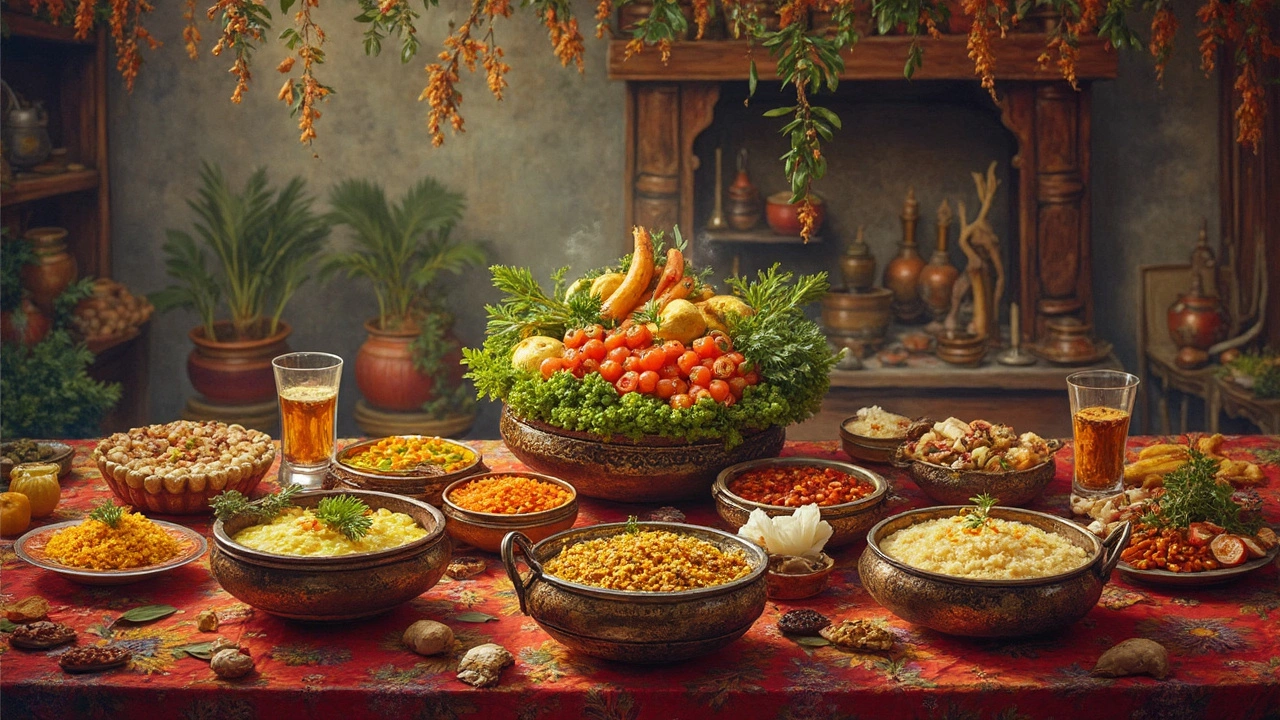Indian Vegetarians: Simple Recipes, Tips & Ingredient Guides
If you love Indian food but want to keep it meat‑free, you’re in the right spot. This page bundles the most useful advice for anyone who eats vegetarian Indian meals at home. From staple pantry items to quick cooking hacks, you’ll find everything you need to whip up flavorful dishes without the hassle.
Core Ingredients for Indian Vegetarian Cooking
First things first – stock your kitchen with a few key items. Lentils, chickpeas, and beans are the protein powerhouses that appear in dal, chana masala, and sambar. Whole grains like basmati rice, millets, and whole‑wheat flour (atta) give you the base for rotis, dosas, and idlis. For veggies, keep onions, tomatoes, potatoes, cauliflower, and okra on hand; they show up in almost every regional recipe.
The spice cabinet is where the magic lives. Turmeric, cumin seeds, mustard seeds, coriander powder, and red chili powder are non‑negotiable. Adding garam masala toward the end of cooking brightens the flavor. Don’t forget fresh herbs – cilantro, mint, and curry leaves add a burst of aroma that turns a plain stew into a feast.
Everyday Tips to Make Indian Veg Meals Faster
Prep can feel like a mountain, but a few tricks flatten it. Soak lentils and beans the night before; they cook in half the time and taste smoother. Use a pressure cooker or instant pot for dals and beans – you’ll get creamy results in 10‑15 minutes. When you need a quick tomato base, blend canned tomatoes with a pinch of sugar; it cuts down on simmering.
Batch‑cook spices. Roast cumin and coriander seeds once, grind them, and store in an airtight jar. This saves you the step of toasting every time you make a curry. Keep a ready‑made spice mix like samosa masala or chaat masala in the pantry for fast flavor boosts.
Plan your meals around one‑pot dishes. A pot of vegetable biryani, a skillet of paneer bhurji, or a pot of mixed vegetable sambar can feed the whole family with minimal cleanup. Pair these with a simple cucumber raita or a quick chutney – both need just yogurt or yogurt plus a few chopped herbs and spices.
Health‑wise, Indian vegetarian meals provide plenty of fiber, antioxidants, and plant protein. Swapping deep‑fried snacks for roasted chana or baked papad adds crunch without extra oil. When you want richness, use a splash of coconut milk or a dollop of ghee instead of cream.
Regional variety keeps things exciting. Try a South Indian masala dosa for breakfast, a Gujarati thali for lunch, and a Punjabi paneer tikka for dinner. Each region uses a distinct blend of spices and cooking methods, giving you endless inspiration without leaving the kitchen.
Finally, keep a list of your favorite quick recipes handy – dal tadka, aloo gobi, chole, and spinach dal are all ready in 30 minutes or less. Bookmark this tag page to return whenever you need a fresh idea or a reminder of which spices go where.
With the right pantry, a few time‑saving habits, and an eye on regional flavors, cooking Indian vegetarian meals becomes a breeze. Dive in, experiment, and let the aromas guide you to delicious, meat‑free feasts every day.
Do Indian Vegetarians Eat Eggs? Unraveling the Mystery
Eggs are a common point of curiosity when it comes to the vegetarian diets of Indian people. While vegetarians in the West might include eggs, Indian vegetarians often follow different unwritten rules. Understanding the diverse cultural and religious influences can clarify the stance on eggs, and exploring regional delicacies can unveil a rich tapestry of eggless yet delicious dishes. Let's dig into why eggs are often left out and what alternatives are embraced instead.
